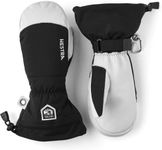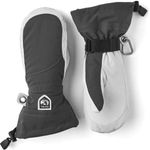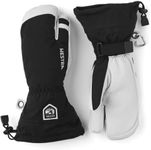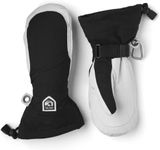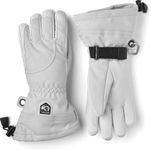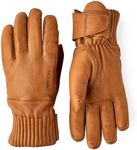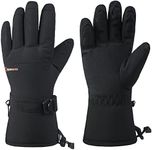Buying Guide for the Best Hestra Ski Gloves
Choosing the right ski gloves is essential for ensuring comfort, warmth, and protection while you're out on the slopes. The right pair of gloves can make a significant difference in your skiing experience, so it's important to consider several key specifications to find the best fit for your needs. Here are the main factors to consider when selecting ski gloves:InsulationInsulation is what keeps your hands warm in cold conditions. It is important because it helps to retain heat and protect your hands from the cold. Insulation can be made from various materials like down, synthetic fibers, or a combination of both. Down insulation is lightweight and very warm but can lose its insulating properties when wet. Synthetic insulation is bulkier but retains warmth even when damp. Choose down insulation if you prioritize warmth and lightness and are confident in keeping your gloves dry. Opt for synthetic insulation if you expect wet conditions or need a more budget-friendly option.
WaterproofingWaterproofing ensures that your hands stay dry in wet and snowy conditions. This is crucial because wet hands can quickly become cold and uncomfortable. Waterproofing is typically achieved through a membrane like Gore-Tex or a durable water repellent (DWR) coating. Gloves with a waterproof membrane are generally more effective at keeping water out but can be less breathable. DWR coatings are less expensive and provide decent water resistance but may need reapplication over time. If you ski in wet conditions or for long periods, prioritize gloves with a waterproof membrane. For drier conditions or shorter outings, DWR-coated gloves may suffice.
BreathabilityBreathability refers to the glove's ability to allow moisture from sweat to escape while keeping external moisture out. This is important to prevent your hands from becoming sweaty and cold. Breathable gloves typically use materials like Gore-Tex or other specialized fabrics. High breathability is essential for active skiers who generate a lot of body heat and sweat. If you tend to ski aggressively or in warmer conditions, look for gloves with high breathability. For more leisurely skiing or colder conditions, breathability may be less critical.
Fit and DexterityFit and dexterity determine how well you can move your fingers and perform tasks while wearing the gloves. A good fit ensures comfort and maximizes warmth by reducing air gaps. Dexterity is important for handling ski poles, adjusting gear, and other tasks. Gloves come in various sizes and shapes, so it's important to try them on or refer to sizing charts. If you need to perform precise tasks, look for gloves with a snug fit and articulated fingers. For general skiing, a slightly looser fit may be more comfortable and warmer.
DurabilityDurability refers to how well the gloves can withstand wear and tear. This is important because ski gloves are exposed to harsh conditions and frequent use. Durable gloves are typically made from high-quality materials like leather or reinforced synthetic fabrics. Leather gloves offer excellent durability and flexibility but may require more maintenance. Synthetic gloves are often more affordable and easier to care for but may not last as long. If you ski frequently or in challenging conditions, prioritize durability. For occasional skiing, less durable options may be sufficient.
Cuff StyleCuff style affects how well the gloves integrate with your ski jacket and how easy they are to put on and take off. There are two main types: gauntlet cuffs and under-cuff gloves. Gauntlet cuffs extend over the jacket sleeve, providing extra protection against snow and wind. Under-cuff gloves fit inside the jacket sleeve for a more streamlined look and feel. Choose gauntlet cuffs for maximum protection in deep snow or harsh conditions. Opt for under-cuff gloves for a sleeker fit and easier mobility.
